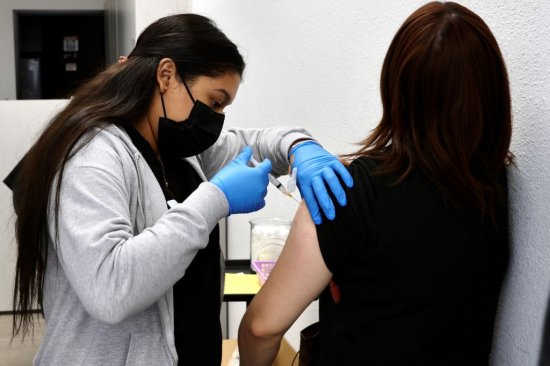
According to data from the Southern Hemisphere.
Different strains of influenza circulate from year to year, which means making the annual flu shot is always a bit of a gamble. Twice a year, the World Health Organization consults experts from around the world to help inform its recommendations about which strains should be targeted by the shots used in the Northern and Southern Hemispheres. Experts’ predictions aren’t always perfect, which is why flu shot efficacy varies depending on the season.
Preliminary data published by the U.S. Centers for Disease Control and Prevention (CDC) suggests this year’s gamble may pay off. Flu shots used during the beginning of the Southern Hemisphere’s flu season—spring and summer in the Northern Hemisphere—did a good job of keeping people out of the hospital, which suggests the same may be true during the U.S.’s looming fall and winter flu season.
[time-brightcove not-tgx=”true”]Flu vaccines prevented about half of all possible influenza-related hospitalizations among young children, older adults, and people with preexisting conditions—three groups at increased risk of severe disease—during the first months of the flu seasonin five South American countries, according to the CDC report. That’s based on data about respiratory-disease-related hospitalizations gathered by almost 500 hospitals in those countries from March to July of this year.
Read More: These Are the Flu Shots You Should Get This Fall and Winter
More From TIME
The shots reduced the risk of flu hospitalizations by an estimated 52%, which puts their effectiveness in the same ballpark as those used in the Northern Hemisphere during the 2022-2023 flu season. Efficacy against hospitalizations rose to 70% among kids six and younger and fell to about 38% among adults in their sixties and older, according to the new report.
There’s no guarantee what happens in the Southern Hemisphere will repeat itself in the Northern Hemisphere, but experts often use the earlier flu season to predict what’s to come for the rest of the world. And since the vaccine used in the Northern Hemisphere this year is similar to the one used in the Southern Hemisphere, the early efficacy estimates are encouraging.
The CDC report also holds another piece of important information for people in the U.S. Flu season began early in the countries included in the report, which means people in the U.S. should—in a potential repeat of last season—be prepared for the same. Health authorities typically recommend getting your flu shot by the end of October, particularly if you’re at high-risk for severe disease due to age or underlying health conditions.
An updated COVID-19 booster will also roll out this fall, along with—for the first time—an RSV vaccine approved for certain groups of vulnerable people. Like last year, you should be able to get your flu and COVID-19 vaccines at the same time to go into the winter illness season as protected as possible.